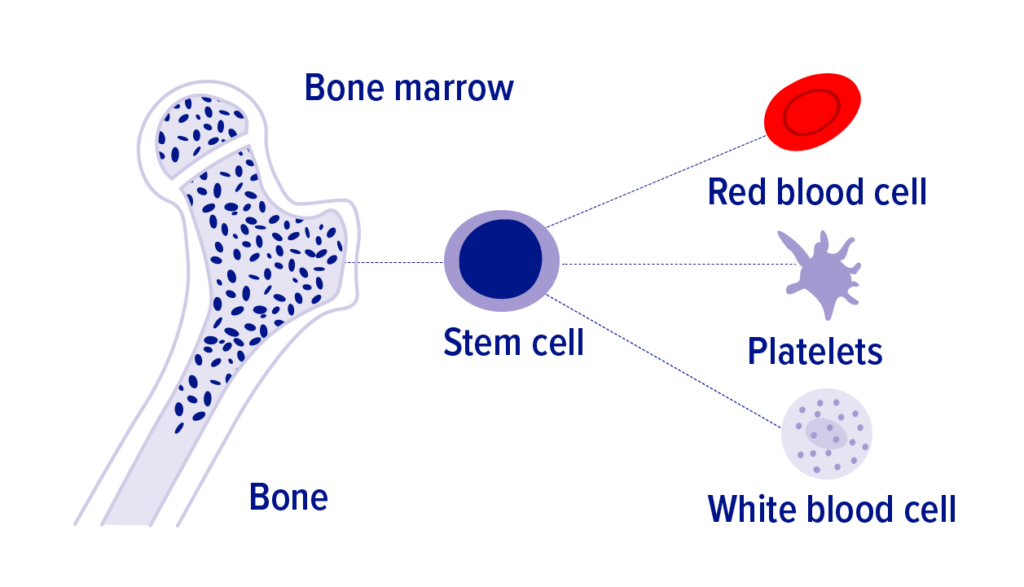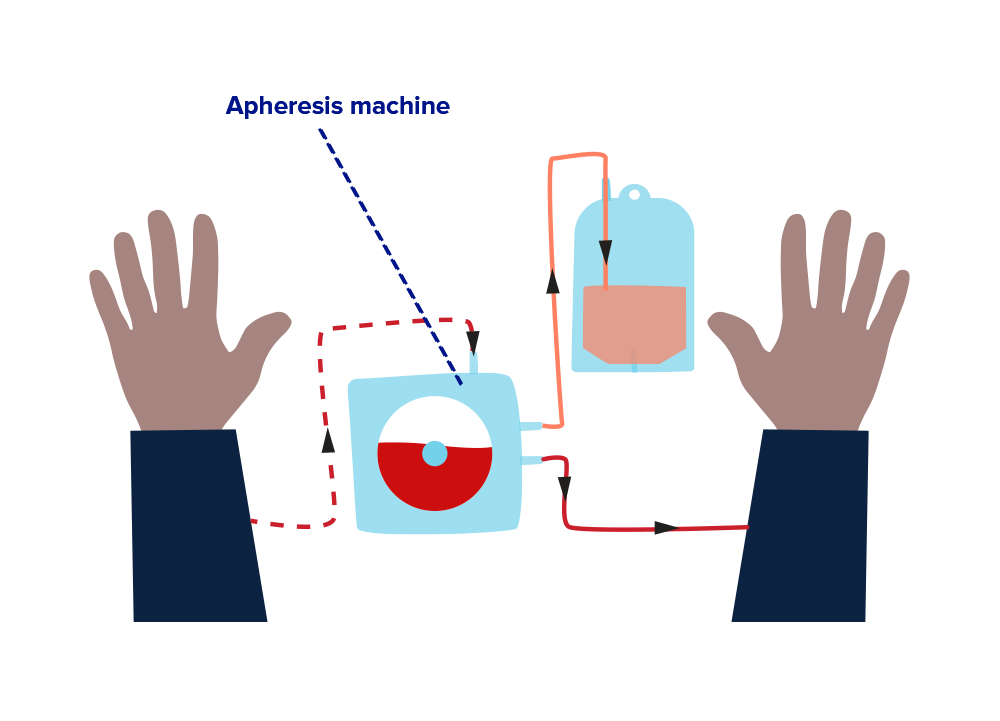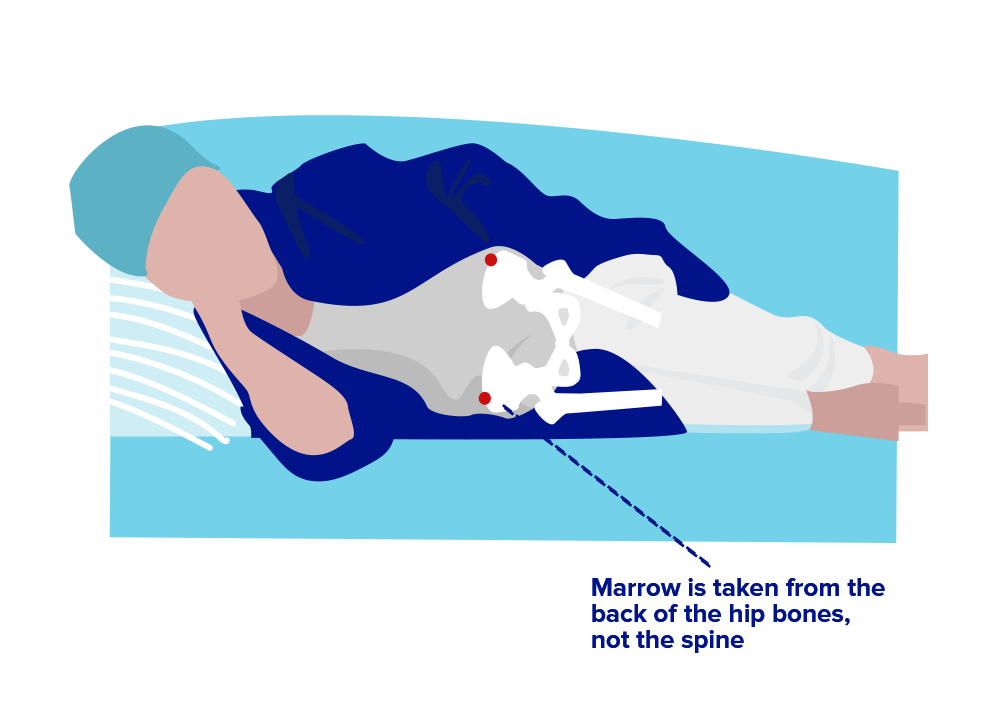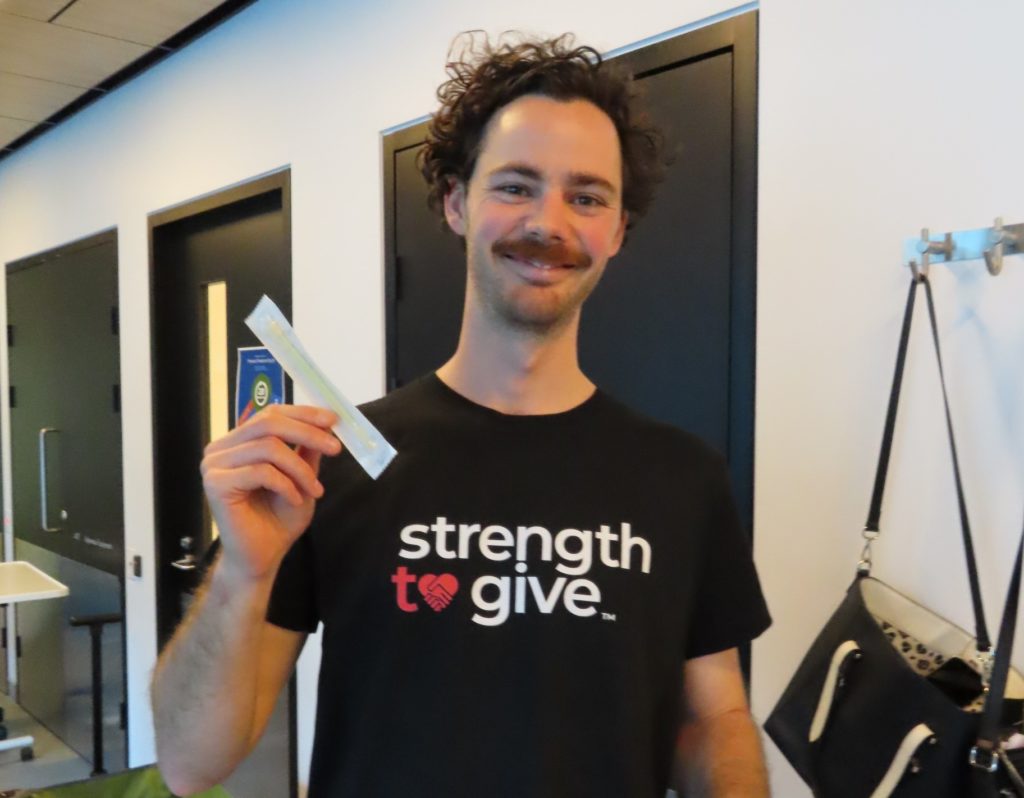Blood stem cell (bone marrow) donation
In 2021, there were 351 unrelated stem cell donors with around 100 from Australia. The rest were from other countries like Germany and the United States. For information on how to be a donor and what a stem cell transplant is all about, please read on.
What are blood stem cells?
- Blood stem cells are found in the bone marrow, which is the soft, spongy part in the middle of bones.
- Blood stem cells produce the body’s blood cells. White blood cells which fight disease and infection, red blood cells which carry oxygen, and platelets which help the blood to clot.
What is a blood stem cell transplant (also known as a bone marrow transplant)?
- A blood stem cell transplant is a lifesaving treatment for people with leukemia, lymphoma, and other cancers. There are other conditions treated by a blood stem cell transplant.
- A blood stem cell transplant is a procedure which replaces blood stem cells in people whose bone marrow has been destroyed by large doses of chemotherapy and/or radiotherapy.
- Donated blood stem cells are needed for a blood stem cell transplant. In some cases, patients can use their own stem cells, also donated umbilical cord blood can be used in some circumstances.
Further information on blood stem cell transplants is available here.
Who can donate blood stem cells?
- Younger donors (18-30 years old) are preferred, their blood stem cells result in the best outcomes for blood stem cell transplant patients.
- Age 35 is the upper limit for joining Stem Cell Donors Australia but potential donors can stay on the registry till they are 60.
- People with any sort of ethnic or indigenous heritage, this group is currently underrepresented on the ABMDR.
- Males make the ideal donor as they physically have more stem cells.
Where and how do I register to donate blood stem cells?
- Like being a blood donor, donating blood stem cells is at no cost to you.
- If you want, register your interest to become a blood stem cell donor or
- If you would like to donate blood and register as a blood stem cell donor, access further information
- If you cannot give blood but would like to register as a blood stem cell donor, please call Australian Red Cross Lifeblood on 13 14 95 for further information.
- A blood or tissue sample is taken for your tissue type, which is used to match donors to patients. The result will be recorded on the Australian Bone Marrow Donor Registry (ABMDR). There are registries in many counties, these are linked worldwide, there is a possibility you may be a match for a patient in another country.
- If you are identified as a match for a patient needing a blood stem cell transplant, further tests are taken for your and the patient’s safety.
- As a volunteer donor you can withdraw at any time but withdrawing at a late stage can have life-threatening consequences for a patient.
Further information on bone marrow donation is available.
How do you donate blood stem cells?
There are two different ways to donate blood stem cells. The type of donation you will be asked to make depends on what is best for the patient and what their doctor decides.
Peripheral blood stem cell donation
- You will receive injections of medication (filgrastim) that are given under the skin (subcutaneously) for several days before the donation.
- The injections increase the number of blood stem cells in your bloodstream.
- You may experience bone or muscle pain, fatigue, and/or headache while receiving injections of filgrastim. Side effects and their management will be discussed with you by the health professionals involved in the donation process.
- Available data from healthy people who have received filgrastim suggests that there are no long-term risks associated with its use in blood stem cell donation.
- On the day of donation, you will usually have 2 cannulas (intravenous tubes) inserted into your veins in your arms. Your blood is taken from one cannula, goes through a machine that takes out the stem cells, and then your blood is returned through the second cannula on your other arm.
- This process is called apheresis, it is generally an outpatient procedure which takes around 4 to 6 hours. You are usually able to go home that day.
- During the collection you may experience nausea, a tingling feeling or chills, these effects can be managed with medication and resolve soon after the procedure is complete.
- You may need to return for a second donation the following day depending on how many blood stem cells are needed.
Bone marrow donation
- Collecting stem cells from bone marrow is done in the operating room.
- You will have an anesthetic, so you will be asleep and not feel any pain during the procedure.
- Needles are inserted into the back of the hip bones near the lower back to draw the stem cells out of the bone.
- This process usually takes 1 to 2 hours.
- After the procedure you will go to the recovery room to be monitored for a few hours and are normally able to go home that day. You will need someone to drive you home when you are discharged.
- You may feel stiff and sore in the lower back area for a few days after the procedure. You can take medication such as paracetamol for any discomfort. You may have some bruising around the procedure site the week after the donation.
- Your body usually replenishes the donated bone marrow within four weeks.
After the procedure
- Recovery times vary depending on the individual and type of donation.
- Most donors return to their usual activities within days to weeks after donation.
- Stem Cell Donors Australia usually keep in touch with you weekly until you can resume your normal activities. Three months after your donation Stem Cell Donors Australia requests you to see your GP and have some tests done to make sure you have fully recovered. A copy of the results should be sent to Stem Cell Donors Australia.
- There is a lot of research into donor health which shows no long-term side effects for stem cell donation, and you will feel incredibly special knowing you helped save someone’s life.
Further information on the bone marrow transplantation procedure is available here.
Donor Privacy and confidentiality
- Your information is collected and stored to ensure safe matching of potential donors.
- If you are identified as a potential match your name will never be shared with the patient or their treating
- The information given by Stem Cell Donors Australia to other registries and treating doctors allows them to confirm you as a suitable match.
- If you are confirmed as a match and agree to donate, only the hospital and health professionals involved in the donation process will know your identity.
- If you would like to contact the patient, a card or letter from you can be sent at any time via Stem Cell Donors Australia national office, you must not include any identifying details.
- In many countries, including Australia, there is a two-year period of which you and the patient will remain anonymous. After this period both donor and patient will need to sign a consent form to authorise the release of personal information. Some international registries do not allow any correspondence or contact between donor and patient.
For further information access the Stem Cell Donors Australia privacy policy.
Jack’s special powers!
When the Registry called and said I had been matched I felt like I had a unique opportunity to really help someone in need. It’s not often you get that sort of call.
The recipient didn’t need just anyone’s cells but specifically my cells because these had the best chance of success. I think this appeals to the little bit of vanity in all of us – almost as if donors have special powers in a time of need. But it also meant I was 100% committed to making the donation and I did not begrudge the minor aches and pains that came with it.
When I think about it now I know I was in a wonderfully privileged position to help the recipient, and I wholeheartedly hope they are well.
– Jack Jacobson, stem cell donor
Last updated on November 12th, 2024
Developed by the Leukaemia Foundation in consultation with people living with a blood cancer, Leukaemia Foundation support staff, haematology nursing staff and/or Australian clinical haematologists. This content is provided for information purposes only and we urge you to always seek advice from a registered health care professional for diagnosis, treatment and answers to your medical questions, including the suitability of a particular therapy, service, product or treatment in your circumstances. The Leukaemia Foundation shall not bear any liability for any person relying on the materials contained on this website.


